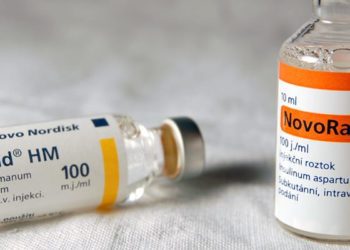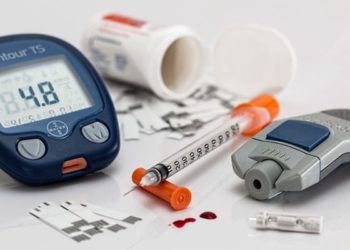Incidence and prevalence of diabetes in US stabilizing
1. The age-adjusted incidence and prevalence of diabetes increased each year between 1990-2008, but has plateaued from 2008-2012.
2. However, certain groups remain disproportionately affected by diabetes, such as non-Hispanic blacks, Hispanic adults, and adults who have high school education or less.
Evidence Rating Level: 2 (Good)
Study Rundown: The association between obesity and diabetes is well established. However, while some studies have reported stabilization in the rate of obesity, none have examined whether this trend holds true for diabetes as well. The authors of this study consequently examined data from the National Health Interview Survey (NHIS) from 1980-2012 to estimate the incidence and prevalence rates of diabetes. Their main outcome was the annual percentage change (APC) in rates of prevalence and incidence of both type 1 and type 2 diabetes. While there was no significant change in the age-adjusted prevalence or incidence of diabetes in the 1980s, there were significant increases each year between 1990-2008 before leveling off between 2008-2012. An increased rate of the incidence of diabetes in non-Hispanic blacks and Hispanic adults was observed compared to non-Hispanic white adults. There was also a higher prevalence of diabetes in adults who had a high school education or less, compared with those with a higher level of education.
The major strength of this study is the use of survey results from a large, representative cohort of U.S. adults over three decades. However, several limitations exist. Although household response rates were relatively high throughout the survey period, this cannot exclude the potential bias from the non-responders. Furthermore, a significant percentage of people have undiagnosed diabetes that would not have been captured in a self-report survey. The survey also only examined the non-institutionalized, civilian U.S. population; the institutionalized population may experience different rates of incidence and prevalence of diabetes. Nevertheless, this study ultimately provides clinicians with insight into the national epidemic of diabetes and importantly highlights those populations that continue to remain particularly vulnerable to the disease.
Click to read the study, published today in JAMA
Relevant Reading: Prevalence of Type 1 and Type 2 Diabetes Among Children and Adolescents From 2001 to 2009
In-Depth [retrospective cohort study]: The study survey contained results from 664,969 non-institutionalized U.S. civilians between 1980-2012. The age-adjusted APC in diabetes prevalence was 0.2 (95%CI -1.1 to 1.2, p=0.95) between 1980-1990, 4.5 (95%CI 4.1 to 4.9, p<0.001) between 1990-2008, and 0.6 (95%CI -1.9 to 3.0, p=0.64) between 2008-2012. Similarly, the age-adjusted APC for the incidence of diagnosed diabetes was -0.1 (95%CI -2.5 to 2.4, p=0.93) between 1980-1990, 4.7 (95%CI 3.8 to 5.6, p<0.001) between 1990-2008, and -5.4 (95%CI -11.3 to 0.9, p=0.09) between 2008-2012.
Demographic subgroups followed the overall trends in incidence and prevalence, although there were differences between subgroups. For example, Hispanic and non-Hispanic black adults had higher rates of increase in incidence compared to non-Hispanic adults (p=0.03 for non-Hispanic black adults and p=0.01 for Hispanic adults). High rates of increase in the prevalence were observed in the 20-44 age group compared to the 45-64 and 65-79 age groups (p=0.04 for the 45-64 age group and p=0.003 for those in the 65-79 year old). The rate of increase in prevalence was also higher in adults who had a high school education or less, compared to those with more than a high school education (p=0.006 for less than high school and p<0.001 for high school).
More from this author: Guided patient self-management of blood pressure medications effective, Flexible sigmoidoscopy decreases colorectal cancer incidence and mortality, Stroke within past 9 months linked with adverse surgical outcomes, Home initiation of HIV care increases anti-retroviral therapy use in Malawi, Immune-modulating enteral nutrition does not reduce infections in the ICU
Image: PD
©2012-2014 2minutemedicine.com. All rights reserved. No works may be reproduced without expressed written consent from 2minutemedicine.com. Disclaimer: We present factual information directly from peer reviewed medical journals. No post should be construed as medical advice and is not intended as such by the authors, editors, staff or by 2minutemedicine.com. PLEASE SEE A HEALTHCARE PROVIDER IN YOUR AREA IF YOU SEEK MEDICAL ADVICE OF ANY SORT.







